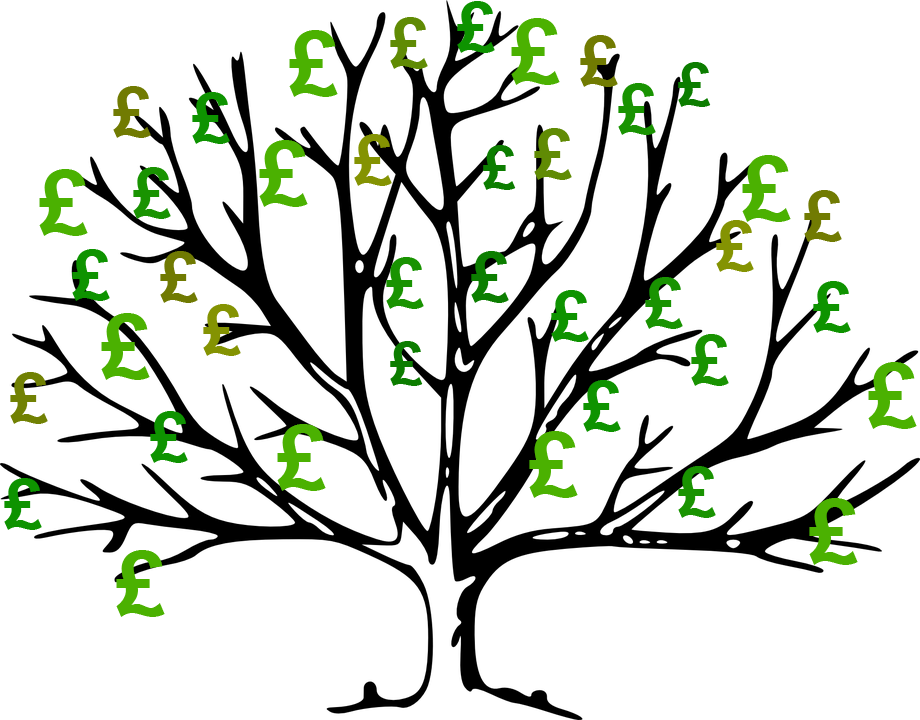 ‘There is no magic money tree’, said Theresa May on several occasions during the 2017 election campaign. The statement was used to justify austerity policies and to criticise calls for increased government expenditure.
‘There is no magic money tree’, said Theresa May on several occasions during the 2017 election campaign. The statement was used to justify austerity policies and to criticise calls for increased government expenditure.
But, in one sense, money is indeed fruit of the magic money tree. There is no fixed stock of money, geared to the stock of gold or some other commodity. Money is created – as if by magic. And most of broad money is not created by government or the central bank. Rather it is created by banks as they use deposits as the basis for granting loans, which become money as they are redeposited in the banking system. Banks are doing this magic all the time – creating more and more money trees as the forest grows. As the Bank of England Quarterly Bulletin explains:
Whenever a bank makes a loan, it simultaneously creates a matching deposit in the borrower’s bank account, thereby creating new money.
However, most of the country’s MPs are unaware of this process of money creation. As the linked Guardian article below states:
Responding to a survey commissioned by Positive Money just before the June election, 85% were unaware that new money was created every time a commercial bank extended a loan, while 70% thought that only the government had the power to create new money.
And yet the role of money and monetary policy is central to many debates in Parliament about the economy. It is disturbing to think that policy debates could be based on misunderstanding. Perhaps MPs would do well to study basic monetary economics! After all, credit creation is not a difficult topic.
Articles
Positive Money poll
Questions
- Do central banks create money and, if so, what form(s) does it take?
- Explain how credit creation works.
- What determines the amount of credit that banks create?
- How can the central bank influence the amount of credit created?
- Distinguish between narrow and broad money supply.
- What is the relationship between government spending and broad money supply (M4 in the UK)?
- Why is there no simple money multiplier whereby total broad money supply is a simple and predictable multiple of narrow money?
- What determines the relationship between money supply and real output?
- Does it matter what type of lending is financed by money creation?
- Comment on the statement: “The argument marshalled against social investment such as education, welfare and public services, that it is unaffordable because there is no magic money tree, is nonsensical.”
- Could quantitative easing be used to finance social investment? Would there be any dangers in the process?
 Seven years ago (on 5 March 2009), the Bank of England reduced interest rates to a record low of 0.5%. This was in response to a deepening recession. It mirrored action taken by other central banks across the world as they all sought to stimulate their economies, which were reeling from the financial crisis.
Seven years ago (on 5 March 2009), the Bank of England reduced interest rates to a record low of 0.5%. This was in response to a deepening recession. It mirrored action taken by other central banks across the world as they all sought to stimulate their economies, which were reeling from the financial crisis.
Record low interest rates, combined with expansionary fiscal policy, were hoped to be enough to restore rates of growth to levels experienced before the crisis. But they weren’t. One by one countries increased narrow money through bouts of quantitative easing.
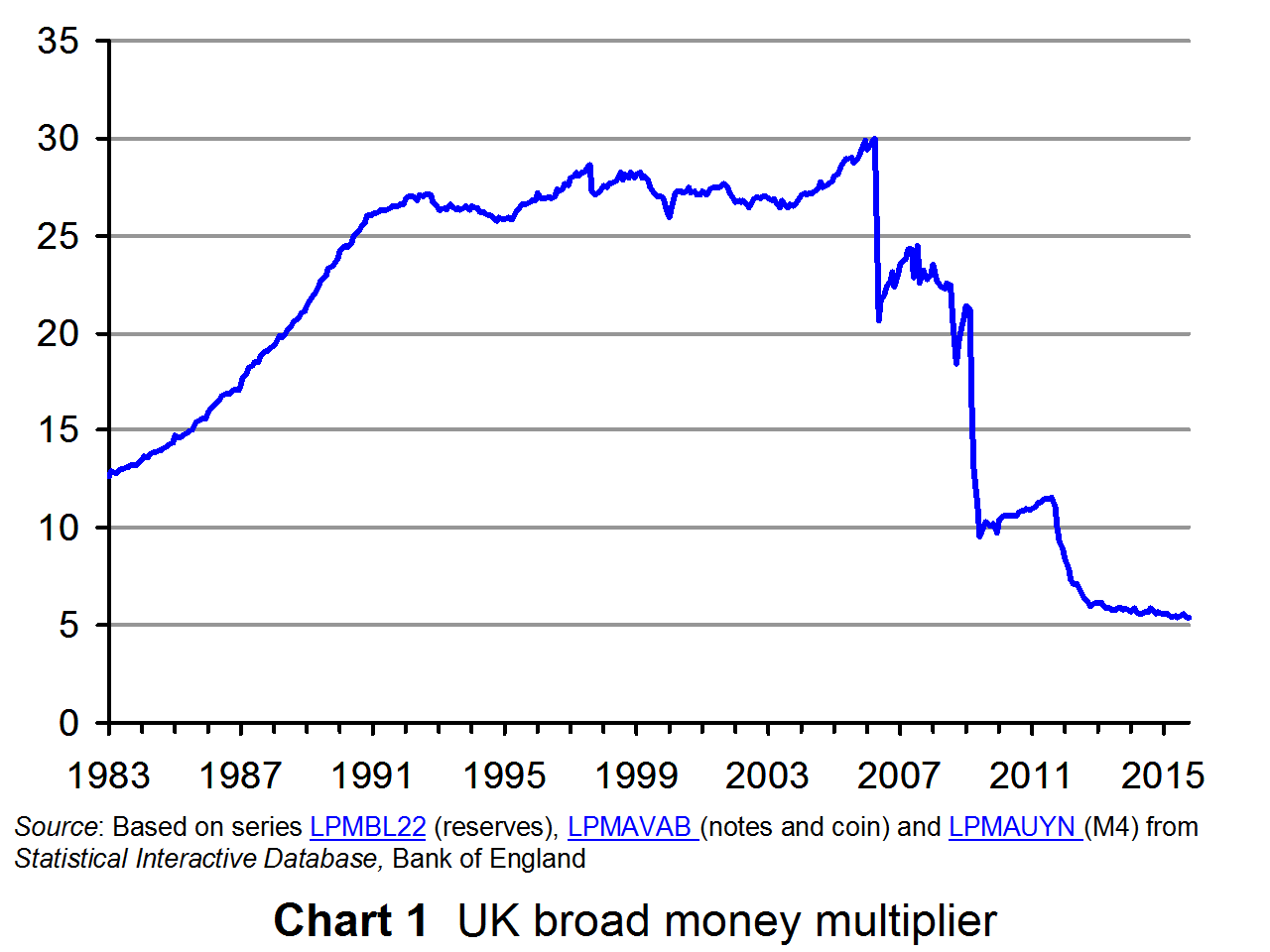 But as worries grew about higher government deficits, brought about by the expansionary fiscal policies and by falling tax receipts as incomes and spending fell, so fiscal policy became progressively tighter. Thus more and more emphasis was put on monetary policy as the means of stimulating aggregate demand and boosting economic growth.
But as worries grew about higher government deficits, brought about by the expansionary fiscal policies and by falling tax receipts as incomes and spending fell, so fiscal policy became progressively tighter. Thus more and more emphasis was put on monetary policy as the means of stimulating aggregate demand and boosting economic growth.
Ultra low interest rates and QE were no longer a short-term measure. They persisted as growth rates remained sluggish. The problem was that the higher narrow money supply was not leading to the hoped-for credit creation and growth in consumption and investment. 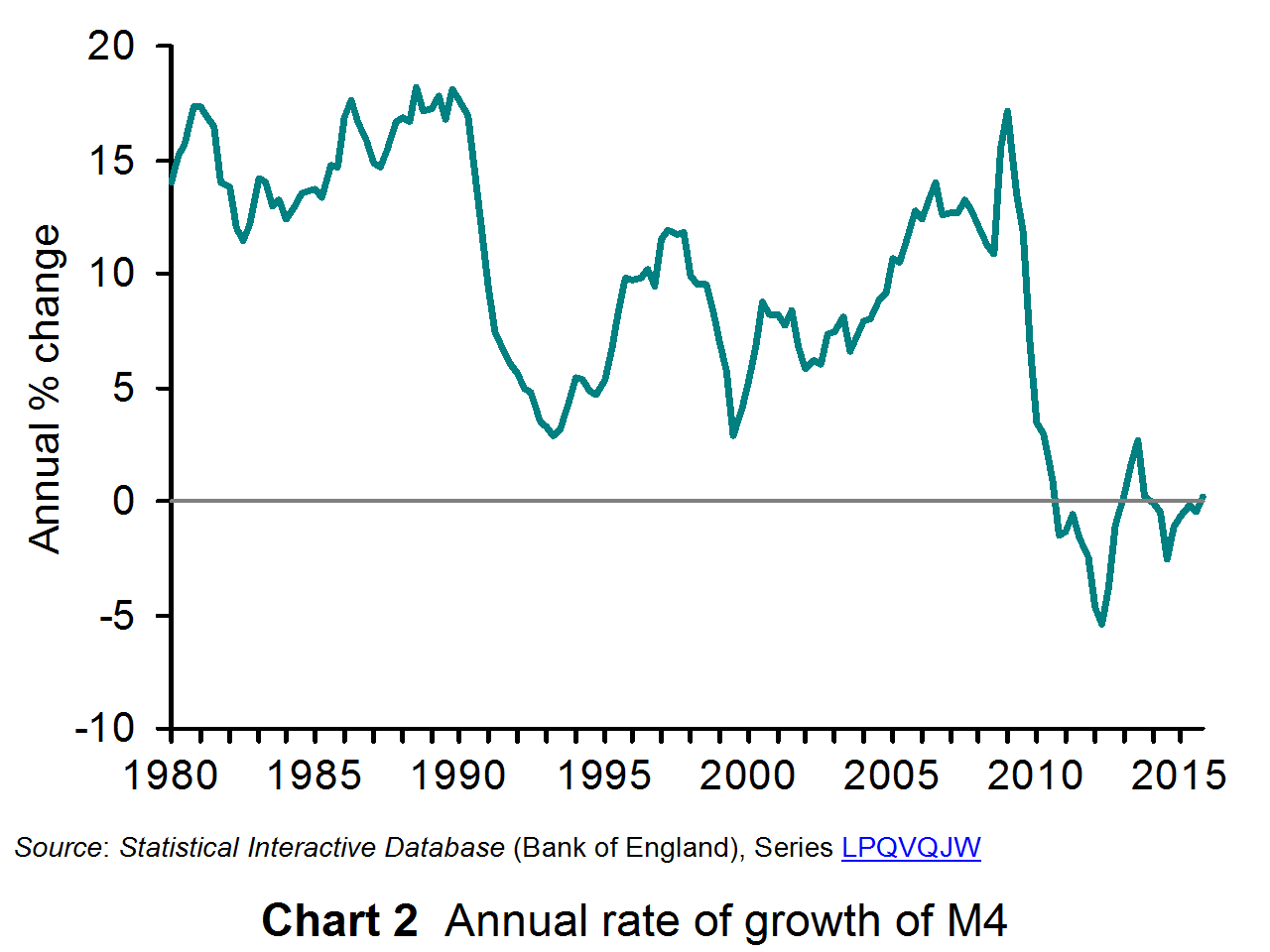 The extra money was being used for buying assets, such as shares and houses, not being spent on goods, services, plant and equipment. The money multiplier fell dramatically in many countries (see chart 1 for the case of the UK: click here for a PowerPoint) and there was virtually no growth in credit creation. Broad money in the UK (M4) has actually fallen since 2008 (see chart 2: click here for a PowerPoint), as it has in various other countries.
The extra money was being used for buying assets, such as shares and houses, not being spent on goods, services, plant and equipment. The money multiplier fell dramatically in many countries (see chart 1 for the case of the UK: click here for a PowerPoint) and there was virtually no growth in credit creation. Broad money in the UK (M4) has actually fallen since 2008 (see chart 2: click here for a PowerPoint), as it has in various other countries.
Additional monetary measures were put in place, including various schemes to provide money to banks for direct lending to companies or individuals. Central banks increasingly resorted to zero or negative interest rates paid to banks for deposits: see the blog posts Down down deeper and down, or a new Status Quo? and When a piggy bank pays a better rate. But still bank lending has stubbornly failed to take off.
Some indication that the ’emergency’ was coming to an end occurred in December 2015 when the US Federal Reserve raised interest rates by 0.25 percentage points. However, many commentators felt that that was too soon, especially in the light of slowing Chinese economic growth. Indeed, the Chinese authorities themselves have been engaging in a large scale QE programme and other measures to arrest this fall in growth.
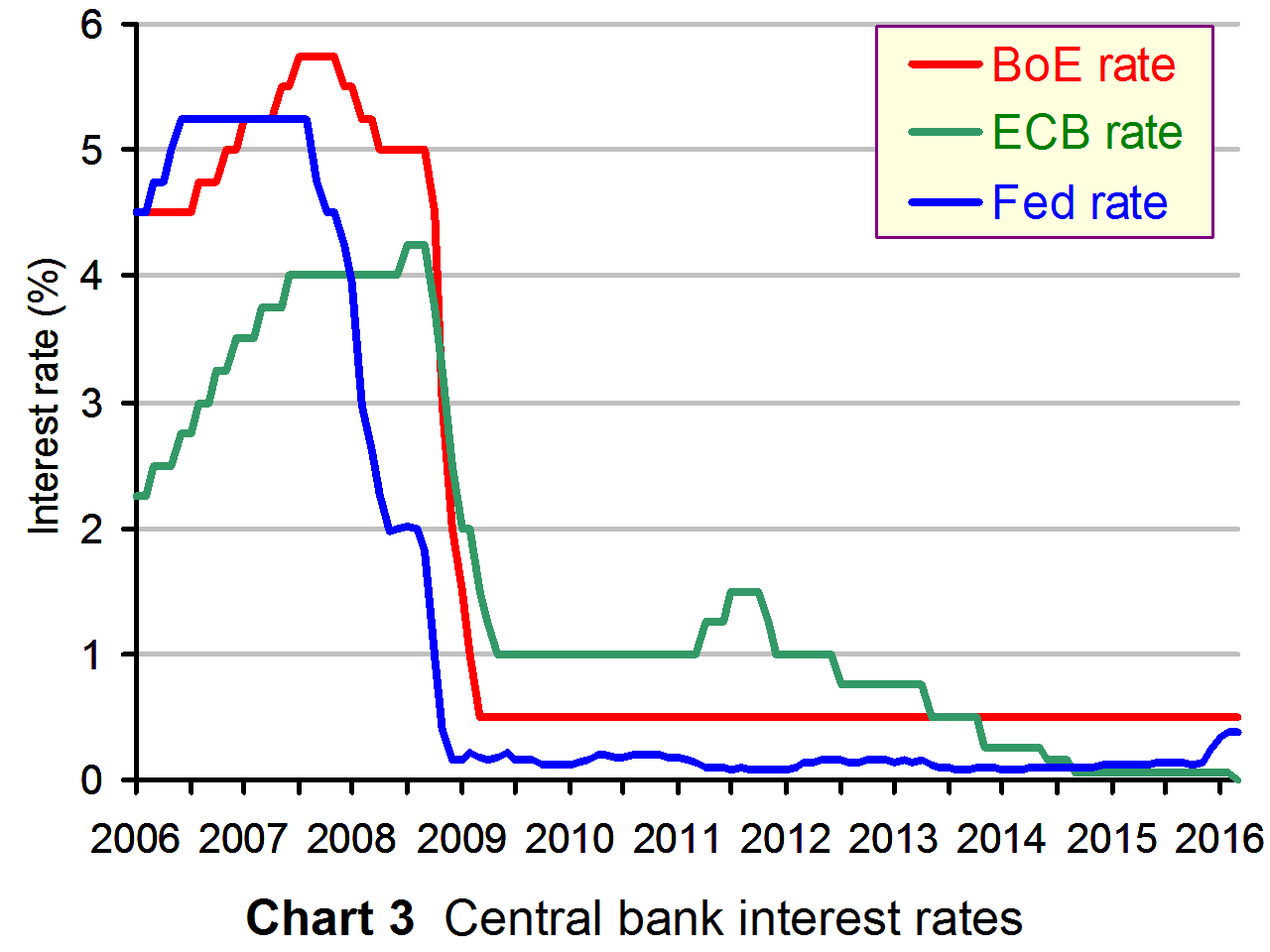 Although it cut interest rates in 2009 (to 1% by May 2009), the ECB was more cautious than other central banks in the first few years after 2008 and even raised interest rates in 2011 (to 1.5% by July of that year). However, more recently it has been more aggressive in its monetary policy. It has progressively cut interest rates (see chart 3: click here for a PowerPoint) and announced in January 2015 that it was introducing a programme of QE, involving €60 billion of asset purchases for at least 18 months from March 2015. In December 2015, it announced that it would extend this programme for another six months.
Although it cut interest rates in 2009 (to 1% by May 2009), the ECB was more cautious than other central banks in the first few years after 2008 and even raised interest rates in 2011 (to 1.5% by July of that year). However, more recently it has been more aggressive in its monetary policy. It has progressively cut interest rates (see chart 3: click here for a PowerPoint) and announced in January 2015 that it was introducing a programme of QE, involving €60 billion of asset purchases for at least 18 months from March 2015. In December 2015, it announced that it would extend this programme for another six months.
The latest move by the ECB was on March 10, when it took three further sets of measures to boost the flagging eurozone economy. It cut interest rates, including cutting the deposit rate paid to banks from –0.3% to –0.4% and the main refinancing rate from –0.05% to –0%; it increased its monthly quantitative easing from €60 billion to €80 billion; and it announced unlimited four-year loans to banks at near-zero interest rates.
It would seem that the emergency continues!
Articles
QE, inflation and the BoE’s unreliable boyfriend: seven years of record low rates The Guardian, Katie Allen (5/3/16)
The End of Alchemy: Money, Banking and the Future of the Global Economy by Mervyn King – review The Observer, John Kampfner (14/3/16)
How ‘negative interest rates’ marked the end of central bank dominance The Telegraph, Peter Spence (21/2/16)
ECB stimulus surprise sends stock markets sliding BBC News (10/3/16)
5 Takeaways From the ECB Meeting The Wall Street Journal, Paul Hannon (10/3/16)
ECB cuts interest rates to zero amid fears of fresh economic crash The Guardian, Katie Allen and Jill Treanor (10/3/16)
 Economists mixed on ECB stimulus CNBC, Elizabeth Schulze (10/3/16)
Economists mixed on ECB stimulus CNBC, Elizabeth Schulze (10/3/16)
ECB’s Draghi plays his last card to stave off deflation The Telegraph, Ambrose Evans-Pritchard (10/3/16)
ECB cuts rates to new low and expands QE Financial Times, Claire Jones (10/3/16)
Is QE a saviour, necessary evil or the road to perdition? The Telegraph, Roger Bootle (20/3/16)
ECB materials
Monetary policy decisions ECB Press Release (10/3/16)
Introductory statement to the press conference (with Q&A) ECB Press Conference, Mario Draghi and Vítor Constâncio (10/3/16)
 ECB Press Conference webcast ECB, Mario Draghi
ECB Press Conference webcast ECB, Mario Draghi
Questions
- What are meant by narrow and broad money?
- What is the relationship between narrow and broad money? What determines the amount that broad money will increase when narrow money increases?
- Explain what is meant by (a) the credit multiplier and (b) the money multiplier.
- Explain how the process of quantitative easing is supposed to result in an increase in aggregate demand. How reliable is this mechanism?
- Find out and explain what happened to the euro/dollar exchange rate when Mario Draghi made the announcement of the ECB’s monetary measures on 10 March.
- Is there a conflict for central banks between trying to strengthen banks’ liquidity and reserves and trying to stimulate bank lending? Explain.
- Why are “the ECB’s policies likely to destroy half of Germany’s 1500 savings and co-operative banks over the next five years”? (See the Telegraph article.
- What are the disadvantages of quantitative easing?
- What are the arguments for and against backing up monetary policy with expansionary fiscal policy? Consider different forms that this fiscal policy might take.
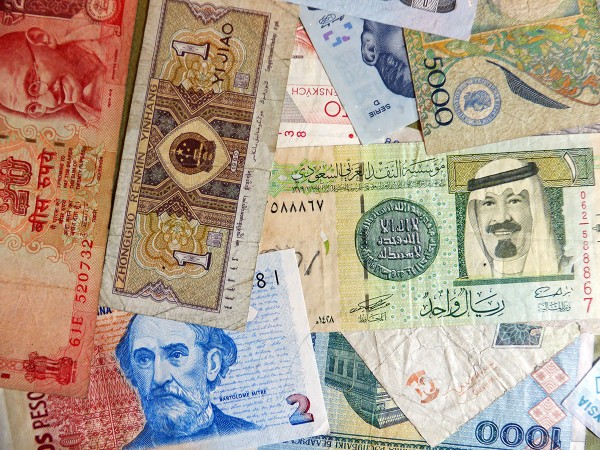 As we saw in the blog post Down down deeper and down, or a new Status Quo?, for many countries there is now a negative rate of interest on bank deposits in the central bank. In other words, banks are being charged to keep liquidity in central banks. Indeed, in some countries the central bank even provides liquidity to banks at negative rates. In other words, banks are paid to borrow!
As we saw in the blog post Down down deeper and down, or a new Status Quo?, for many countries there is now a negative rate of interest on bank deposits in the central bank. In other words, banks are being charged to keep liquidity in central banks. Indeed, in some countries the central bank even provides liquidity to banks at negative rates. In other words, banks are paid to borrow!
But, by definition, holding cash (in a safe or under the mattress) pays a zero interest rate. So why would people save in a bank at negative interest rates if they could get a zero rate simply by holding cash? And why would banks not borrow money from the central bank, if borrowing rates are negative, hold it as cash and earn the interest from the central bank?
 These questions are addressed in the article below from The Economist. It argues that to swap reserves for cash is costly to banks and that this cost is likely to exceed the interest they have to pay. In other words, there is not a zero bound to central bank interest rates, either for deposits or for the provision of liquidity; and this reflects rational behaviour.
These questions are addressed in the article below from The Economist. It argues that to swap reserves for cash is costly to banks and that this cost is likely to exceed the interest they have to pay. In other words, there is not a zero bound to central bank interest rates, either for deposits or for the provision of liquidity; and this reflects rational behaviour.
But does the same apply to individuals? Would it not be rational for banks to charge customers to deposit money (a negative interest rate)? Indeed, there is already a form of negative interest rate on many current accounts; i.e. the monthly or annual charge to keep the account open. But would it also make sense for banks to offer negative interest rates on loans? In other words, would it ever make sense for banks to pay people to borrow?
Read the folowing article and then try answering the questions.
Article
Bankers v mattresses The Economist (28/11.15)
Central bank repo rates/base rates
Central banks – summary of current interest rates global-rates.com
Worldwide Central Bank Rates CentralBankRates
Questions
- What is a central bank’s ‘repo rate’. Is it the same as (a) its overnight lending rate; (b) its discount rate?
- Why are the Swedish and Swiss central banks charging negative interest rates when lending money to banks?
- What effect are such negative rates likely to have on (a) banks’ cash holdings; (b) banks’ lending to customers?
- Why are many central banks (including the ECB) charging banks to deposit money with them? Why do banks continue to make such deposits when interest rates are negative?
- Would banks ever lend to customers at negative rates of interest? Explain why or why not.
- Would banks ever offer negative rates of interest on savings accounts? Explain why or why not.
- How do expectations about exchange rate movements affect banks willingness to hold deposits with the central bank?
- What are the arguments for and against abolishing cash altogether?
 If you asked virtually any banker or economist a few years ago whether negative (nominal) interest rates were possible, the answer would almost certainly be no.
If you asked virtually any banker or economist a few years ago whether negative (nominal) interest rates were possible, the answer would almost certainly be no.
Negative real interest rates have been common at many points in time – whenever the rate of inflation exceeds the nominal rate of interest. People’s debts and savings are eroded by inflation as the interest due or earned does not keep pace with rising prices.
But negative nominal rates? Surely this could never happen? It was generally believed that zero (or slightly above zero) nominal rates represented a floor – ‘a zero lower bound’.
The reasoning was that if there were negative nominal rates on borrowing, you would effectively be paid by the bank to borrow.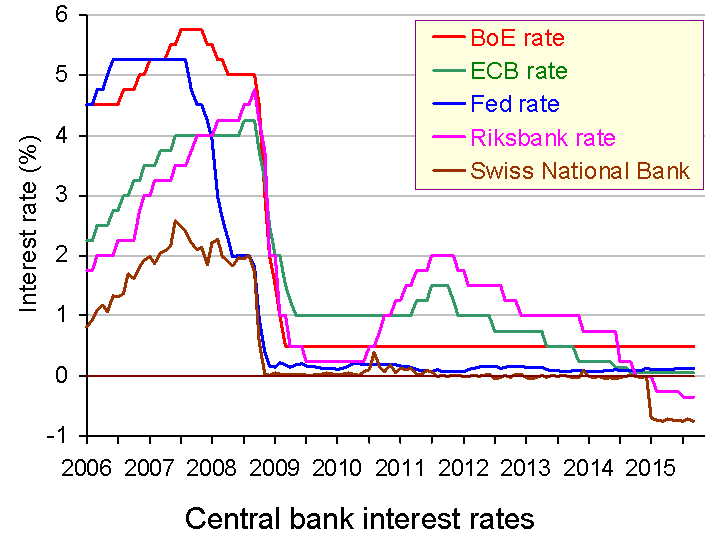 In such a case, you might as well borrow as much as you can, as you would owe less later and could pocket the difference.
In such a case, you might as well borrow as much as you can, as you would owe less later and could pocket the difference.
A similar argument was used with savings. If nominal rates were negative, savers might as well withdraw all their savings from bank accounts and hold them as cash (perhaps needing first to buy a safe!) Given, however, that this might be inconvenient and potentially costly, some people may be prepared to pay banks for looking after their savings.
Central bank interest rates have been hovering just above zero since the financial crisis of 2008. And now, some of the rates have turned negative (see chart above). The ECB has three official rates:
|
|
| • |
The interest rate on the main refinancing operations (MRO), which provide the bulk of liquidity to the banking system. |
| • |
The rate on the deposit facility, which banks may use to make overnight deposits with the Eurosystem. |
| • |
The rate on the marginal lending facility, which offers overnight credit to banks from the Eurosystem. |
The first of these is the most important rate and remains above zero – just. Since September 2014, it has been 0.05%. This rate is equivalent to the Bank of England’s Bank Rate (currently still 0.5%) and the Fed’s Federal Funds Rate (currently still between 0% and 0.25%).
The third of the ECB’s rates is currently 0.3%, but the second – the rate on overnight deposits in the ECB by banks in the eurozone – is currently –0.2%.  In other words, banks have to pay the ECB for making these overnight deposits (deposits that can be continuously rolled over). The idea has been to encourage banks to lend rather than simply keeping unused liquidity.
In other words, banks have to pay the ECB for making these overnight deposits (deposits that can be continuously rolled over). The idea has been to encourage banks to lend rather than simply keeping unused liquidity.
In Nordic countries, the experiment with negative rates has gone further. With plenty of slack in the Swedish economy, negative inflation and an appreciating krona, the Swedish central bank – the Riksbank – cut its rates below zero.
Many City analysts believe that the Riksbank will continue cutting, reducing its key interest rate to minus 0.5% by the end of the year [it is currently 0.35%]. Switzerland’s is already deeper still, at minus 0.75%, while Denmark and the eurozone have joined them as members of the negative zone.
But the nominal interest rate on holding cash is, by definition, zero. If deposit rates are pushed below zero, then will more and more people hold cash instead? 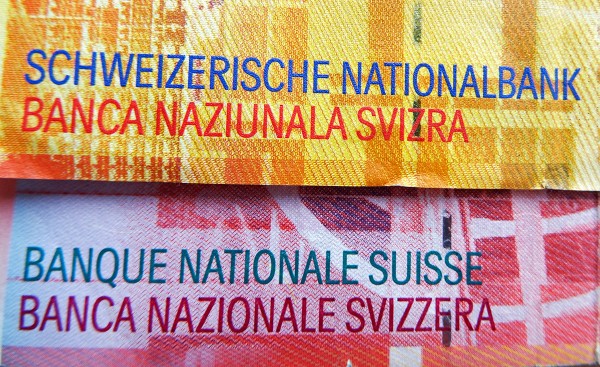 The hope is that negative nominal interest rates on bank accounts will encourage people to spend. It might, however, merely encourage them to hoard cash.
The hope is that negative nominal interest rates on bank accounts will encourage people to spend. It might, however, merely encourage them to hoard cash.
The article below from The Telegraph looks at some of the implications of an era of negative rates. The demand for holding cash has been increasing in many countries and, along with it, the supply of banknotes, as the chart in the article shows. Here negative interest are less effective. In Nordic countries, however, the use of cash is virtually disappearing. Here negative interest rates are likely to be more effective in boosting aggregate demand.
Article
How Sweden’s negative interest rates experiment has turned economics on its head The Telegraph, Peter Spence (27/9/15)
Data
Central bank and monetary authority websites Bank for International Settlements
Central banks – summary of current interest rates global-rates.com
Questions
- Distinguish between negative real and negative nominal interest rates.
- What is the opportunity cost of holding cash – the real or the nominal interest rate forgone by not holding it in a bank?
- Are there any dangers of central banks setting negative interest rates?
- Why may negative interest rates be more effective in Sweden than in the UK?
- ‘Andy Haldane, a member of the Monetary Policy Committee (MPC) … suggested that to achieve properly negative rates, the abolition of cash itself might be necessary.’ Why?
- Why does Switzerland have notes of SF1000 and the eurozone of €500? Should the UK have notes of £100 or even £500?
- Why do some banks charge zero interest rates on credit cards for a period of time to people who transfer their balances from another card? Is there any incentive for banks to cut interest rates on credit cards below zero?
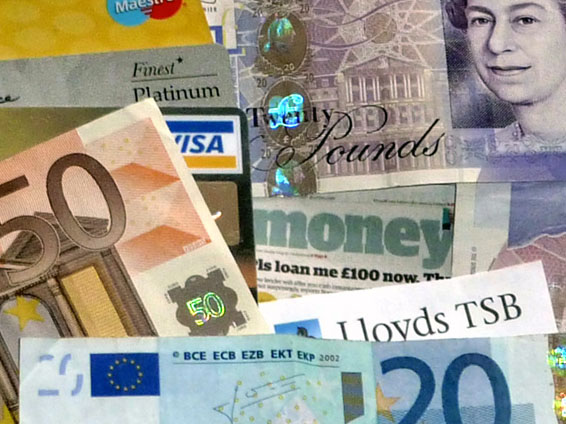 The first link below is to an excellent article by Noriel Roubini, Professor of Economics at New York University’s Stern School of Business. Roubini was one of the few economists to predict the 2008 financial crisis and subsequent recession. In this article he looks at the current problem of substantial deficiency of demand: in other words, where actual output is well below potential output (a negative output gap). It is no wonder, he argues, that in these circumstances central banks around the world are using unconventional monetary policies, such as virtually zero interest rates and quantitative easing (QE).
The first link below is to an excellent article by Noriel Roubini, Professor of Economics at New York University’s Stern School of Business. Roubini was one of the few economists to predict the 2008 financial crisis and subsequent recession. In this article he looks at the current problem of substantial deficiency of demand: in other words, where actual output is well below potential output (a negative output gap). It is no wonder, he argues, that in these circumstances central banks around the world are using unconventional monetary policies, such as virtually zero interest rates and quantitative easing (QE).
He analyses the causes of deficiency of demand, citing banks having to repair their balance sheets, governments seeking to reduce their deficits, attempts by firms to cut costs, effects of previous investment in commodity production and rising inequality.
 The second link is to an article about the prediction by the eminent fund manager, Crispin Odey, that central banks are running out of options and that the problem of over-supply will lead to a global slump and a stock market crash that will be ‘remembered in a hundred years’. Odey, like Roubini, successfully predicted the 2008 financial crisis. Today he argues that the looming ‘down cycle will cause a great deal of damage, precisely because it will happen despite the efforts of central banks to thwart it.’
The second link is to an article about the prediction by the eminent fund manager, Crispin Odey, that central banks are running out of options and that the problem of over-supply will lead to a global slump and a stock market crash that will be ‘remembered in a hundred years’. Odey, like Roubini, successfully predicted the 2008 financial crisis. Today he argues that the looming ‘down cycle will cause a great deal of damage, precisely because it will happen despite the efforts of central banks to thwart it.’
I’m sorry to post this pessimistic blog and you can find other forecasters who argue that QE by the ECB will be just what is needed to stimulate economic growth in the eurozone and allow it to follow the USA and the UK into recovery. That’s the trouble with economic forecasting. Forecasts can vary enormously depending on assumptions about variables, such as future policy measures, consumer and business confidence, and political events that themselves are extremely hard to predict.
Will central banks continue to deploy QE if the global economy does falter? Will governments heed the advice of the IMF and others to ease up on deficit reduction and engage in a substantial programme of infrastructure investment? Who knows?
An Unconventional Truth Project Syndicate, Nouriel Roubini (1/2/15)
UK fund manager predicts stock market plunge during next recession The Guardian, Julia Kollewe (30/1/15)
Questions
- Explain each of the types of unconventional monetary policy identified by Roubini.
- How has a policy of deleveraging by banks affected the impact of quantitative easing on aggregate demand?
- Assume you predict that global economic growth will increase over the next two years. What reasons might you give for your prediction?
- Why have most commodity prices fallen in recent months? (In the second half of 2014, the IMF all-commodity price index fell by 28%.)
- What is likely to be the impact of falling commodity prices on global demand?
- Some neo-liberal economists had predicted that central bank policies ‘would lead to hyperinflation, the US dollar’s collapse, sky-high gold prices, and the eventual demise of fiat currencies at the hands of digital krypto-currency counterparts’. Why, according to Roubini, did the ‘root of their error lie in their confusion of cause and effect’?
 ‘There is no magic money tree’, said Theresa May on several occasions during the 2017 election campaign. The statement was used to justify austerity policies and to criticise calls for increased government expenditure.
‘There is no magic money tree’, said Theresa May on several occasions during the 2017 election campaign. The statement was used to justify austerity policies and to criticise calls for increased government expenditure.










